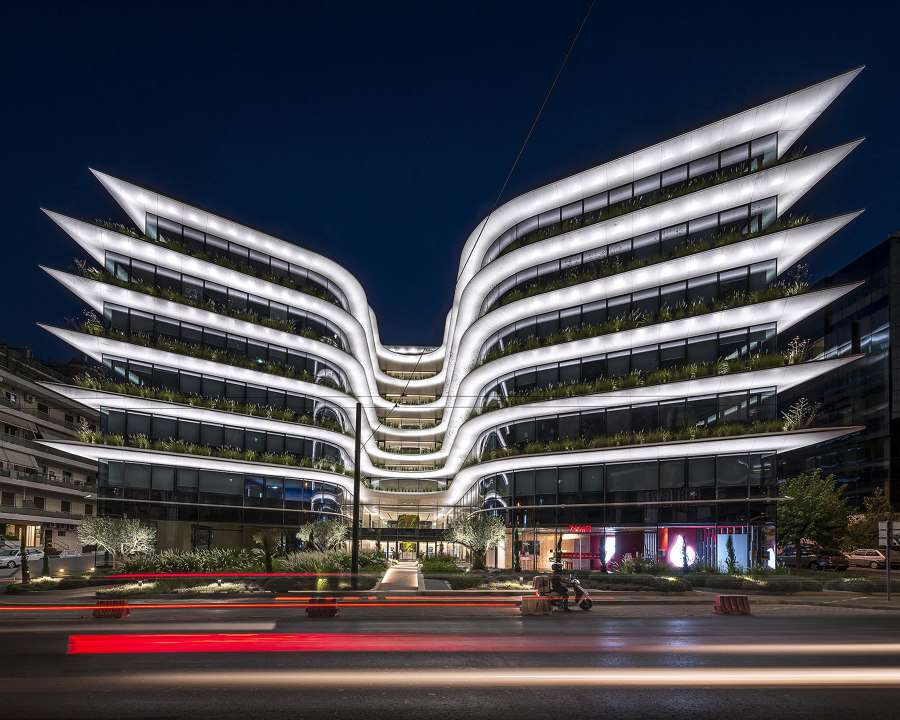The use of artificial light as an architectural element,
Architects try to improve their architecture experience once the sun goes down,
by collaborating closely with specialist lighting planners.
Architects aspire to be creative during the day as well as at nightfall, when conceiving new projects.
The unique and distinctive forms of the facade of the structure can be emphasized by the use of light as an architectural element,
where they can explore the potential of artificial light to create more attractive visual experiences for city dwellers after sunset.
The use of artificial light as an architectural element
We always find that specific expertise is needed to achieve these desired effects,
which means that collaborations between architectural offices and lighting design practices are increasingly common.
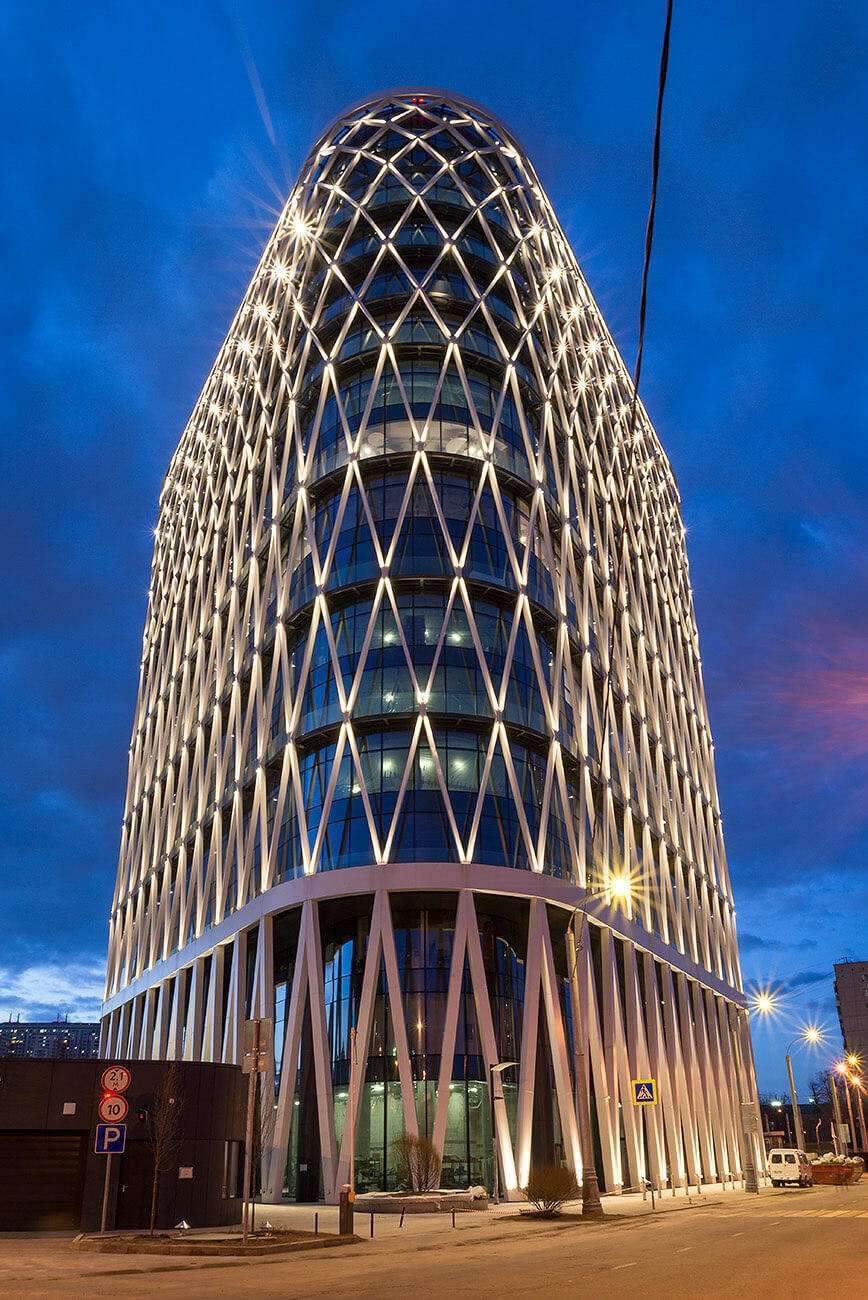
Zemel ‘nyi Business Center
The UNK project in Moscow designed Zemel ‘nyi Business Center’ in collaboration with QPRO, a company specializing in lighting and automation design.
The metal mesh-like envelope that wraps the entire building is the most urgent architectural rationale to enhance with lighting.
Doubly oriented LED projectors with narrow beam angle optics,
positioned at grille junctions, define each section of the metal grid.
Which indicates the overall design style and contrasts with the background of the glass facade.
Light can also sometimes become an ever-changing iridescent element,
creating an attractive visual effect.
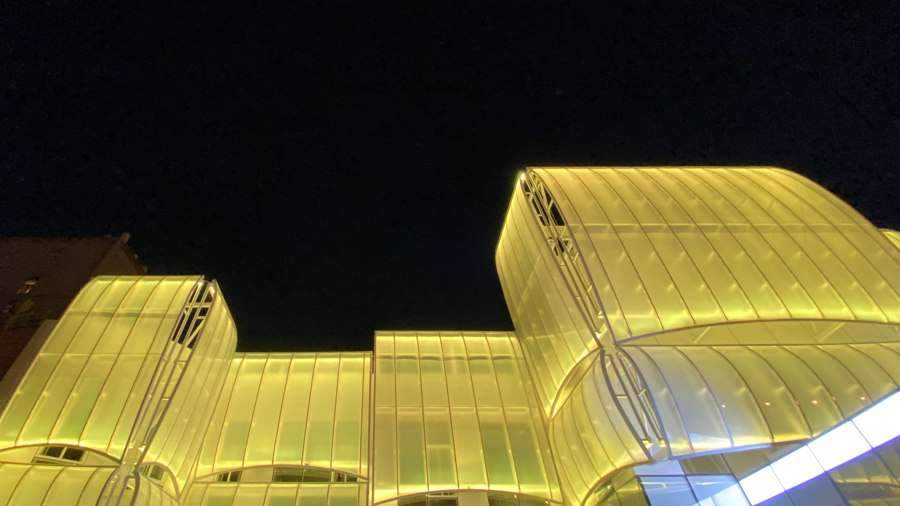
City Exhibition Hall
This is also the case with the City Exhibition Hall in Tianjin, China,
which was designed by the Vanke Group after consulting PURI Lighting.
Where the ETFE film covers the facade as a neutral milky skin during the day,
its thinness is revealed when the lights penetrate the inflatable membrane.
This gives the building a completely different atmosphere at night, as the lights installed behind the film can change color,
according to the requirements of the event or in response to certain conditions from the surrounding environment.
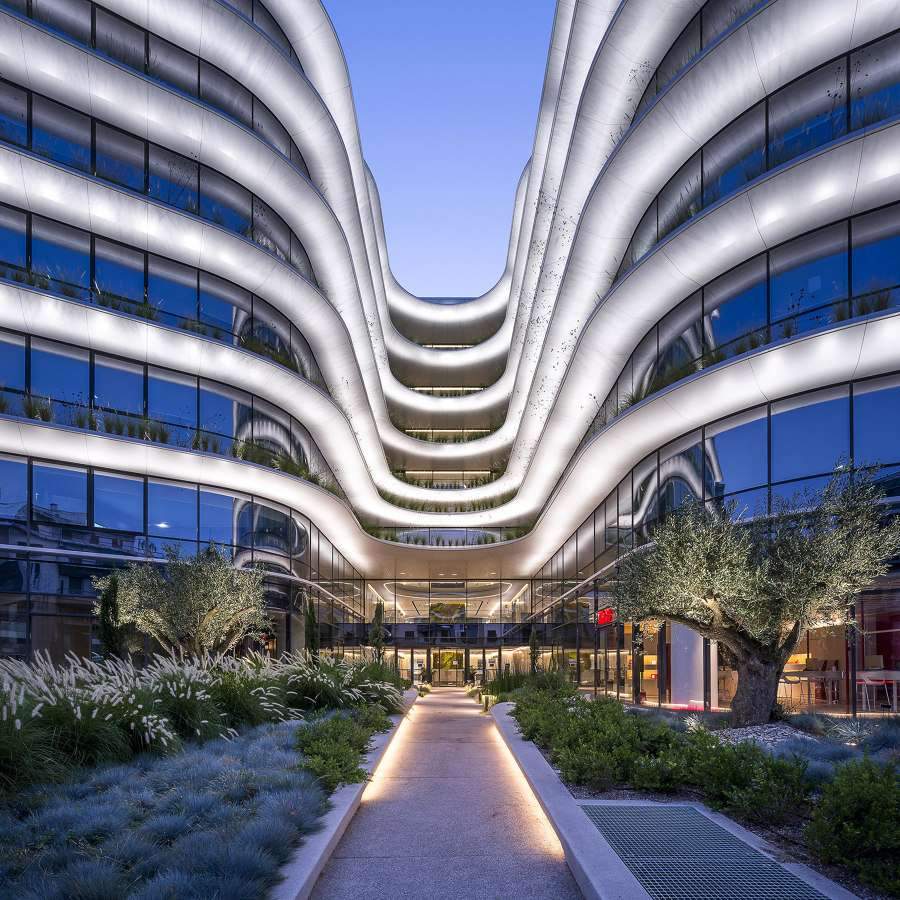
Urban Office Campus “Orbit”
Lianou Chalvatzis Architects and Vikelas Architects in collaboration with local lighting designer Athanassios Danilof,
when they were commissioned to design the campus of the Urban Office “Orbit” in Athens,
aimed to create a new landmark for the night city.
The campus lighting scheme appears as a celebration of architectural form,
and the building’s sharp, undulating shapes can be emphasized by homogeneous white light that wraps around the cantilevered panels.
This is achieved by making them shimmering and self-luminous surfaces that stand out from the dark glazed facade behind them.
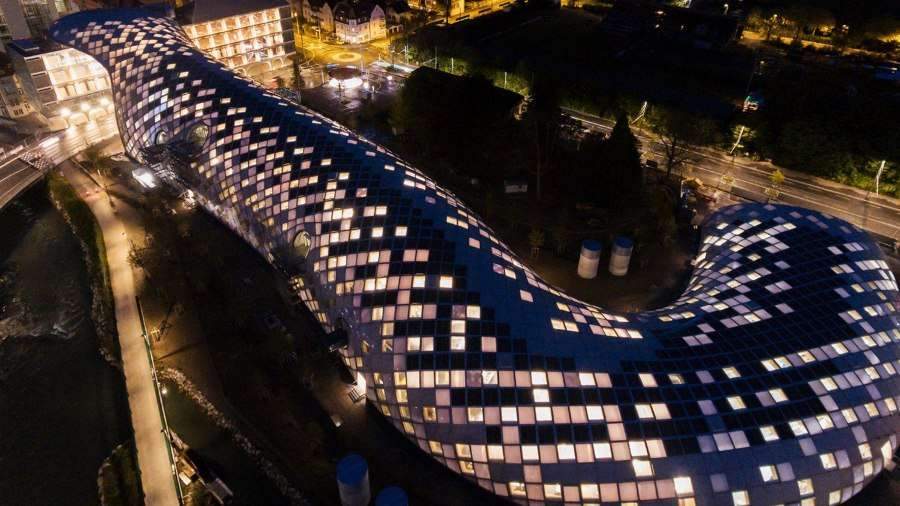
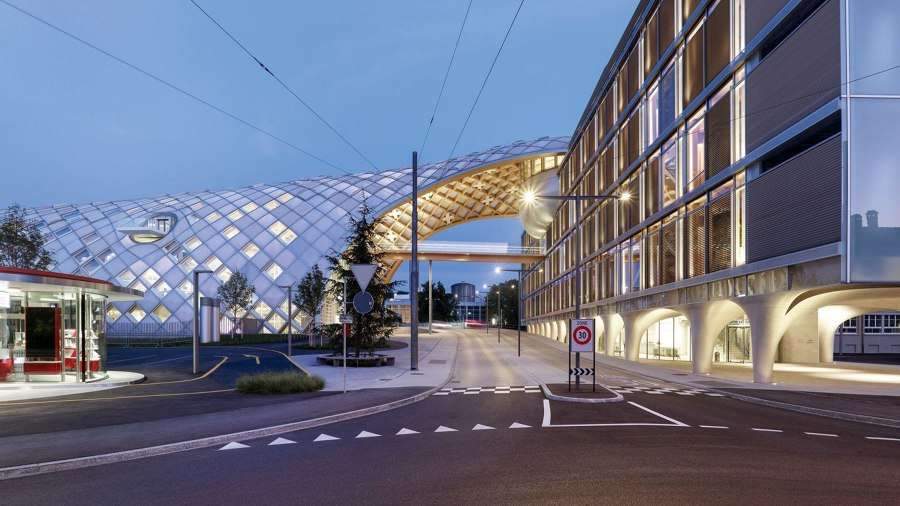
Swatch. Headquarters
At the Swatch headquarters designed by Shigeru Ban Architects in Biel, Switzerland,
the lighting concept has added modularity to the facade by highlighting its individual elements.
The wooden lattice structure that forms the building envelope in the shape of a snake is made of different types of beehive, opaque, transparent and semi-transparent,
giving the facade a completely uniform appearance during the day.
Interior lighting penetrates the transparent and semi-transparent units,
during the night in a playful composition that creates gradations and contrasts between the single cells.


 العربية
العربية